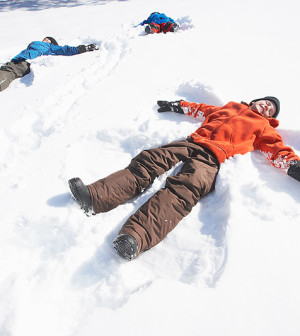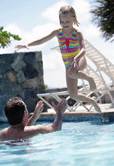- Skip Storing This Everyday Product in the Fridge Door
- Green Tea + B3 Pairing May Boost Brain Health
- Navigating Your Midlife Crisis: Embracing New Possibilities
- City Raccoons Showing Signs of Domestication
- Mapping the Exposome: Science Broadens Focus to Environmental Disease Triggers
- One Week Less on Social Media Linked to Better Mental Health
- Your Brain Changes in Stages as You Age, Study Finds
- Some Suicide Victims Show No Typical Warning Signs, Study Finds
- ByHeart Formula Faces Lawsuits After Babies Sickened With Botulism
- Switch to Vegan Diet Could Cut Your Greenhouse Gas Emissions in Half
Thinking About a Pool? Think About Safety


Drowning is the leading cause of death of American children younger than 5, and they’re more likely to drown in a backyard pool than any other body of water, an expert says.
“What we often hear in the emergency room is that a group was gathered at the pool for an event or party, but no one was taking ownership of watching the children in the pool,” Dr. Natalie Lane, medical director of the emergency department at Children’s Hospital of Georgia, said in a hospital news release.
“Unfortunately, folks think someone else is watching the kids, or falsely assume that everyone is keeping an eye out. This is where the trouble begins,” she said.
Parents should not install a swimming pool at home until children are older than 5, the American Academy of Pediatrics says.
If you have a pool at home, there are safety measures you must follow, Lane said. She offers these precautions:
- Never leave children alone in or near a pool. Always have children supervised by an adult who can swim.
- Make sure to have a clear, unobstructed view of children of all times.
- Keep children away from pool drains, pipes and other openings.
- Never using inflatable flotation devices instead of approved life vests.
- Children should learn to swim, or at least know basic water safety tips.
- Have a fence at least 4 feet high around the pool, with a self-closing and self-latching gate.
- When the pool is not in use, remove all toys and floats from the pool area that could attract children, and place a safety cover over the pool.
Other recommendations: Install a pool alarm to alert you when children are near the water, and have a qualified professional inspect drain suction fittings and covers on a regular basis to ensure they are safe.
Keep rescue equipment, a phone and emergency phone numbers poolside. Develop an emergency plan and have each family member rehearse their role.
If your child is missing, check the pool first. Parents and caregivers should also learn CPR and rescue breathing, Lane said.
More information
The American Academy of Pediatrics has more about pool safety.
Source: HealthDay
Copyright © 2025 HealthDay. All rights reserved.










